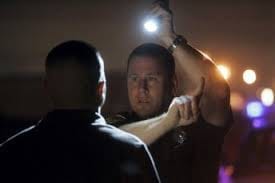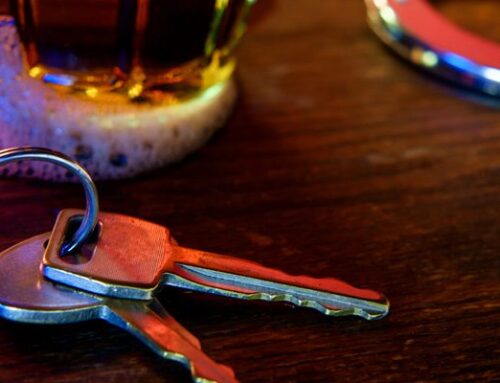The National Highway Traffic Safety Administration (NHTSA) spent many thousands of dollars on studies to develop a battery of DWI investigation tools called field sobriety tests. The studies were funded by NHTSA to validate and standardize the Horizontal Gaze Nystagmus (HGN), the Walk-and-Turn, and the One-Leg-Stand tests. Standardization meant developing a method of administering and interpreting each test. Validation meant determining whether a correlation existed between test performance and a designated breath/blood alcohol content (BAC). Ever since, Texas prosecutors have used the Standardized Field Sobriety Tests (SFSTs) to prove driver impairment rather than estimate BAC. By driver impairment I mean proof the accused had lost the normal use of their mental or physical faculties. The police regularly portray the SFSTs as reliable indicators of impairment although the validation studies never established this correlation. Consequently, I routinely pack the validation studies for trial. Depending on my case theory, the studies provide ammunition to discredit the arresting officer’s predictable opinion about the reliability and effectiveness of these tests for determining driver intoxication.
How can you use the validation studies to your advantage to challenge the field sobriety tests? At least two studies reported findings which help you discredit the SFSTs. But first you must obtain suitable copies of each. I obtained mine from the U.S. Department of Commerce. They are domestic public documents under seal and self-authenticating. See TEX. R. EVID. 902(1). This way you can utilize the studies without proving them up with extrinsic evidence. Second, your officers must testify the studies are a reliable authority (i.e., a learned treatise) to avoid a hearsay objection. “To the extent called to the attention of an expert witness upon cross-examination or relied upon by the expert in direct examination, statements contained in published treatises, periodicals, or pamphlets on a subject of history, medicine, or other science or art established as a reliable authority by the testimony or admission of the witness or by other expert testimony or by judicial notice.” See TEX. R. EVID. 803(18). I maintain a running list of police officers married to the SFST studies. The easiest time to commit them is during the ALR hearing. First, pledge them to their NHTSA DWI Detection and Standardized Field Sobriety Testing student manual. Next, commit them to the published SFST studies outlined in the same manual as reliable authorities. Every officer should acknowledge their own NHTSA student manual. Most officers will acknowledge the SFST validation studies, as well. If not, you’ll need another expert or judicial notice to establish the studies as reliable authority.
Anyone who’s tried a DWI remembers the prosecutor swinging for the fence with the esteemed HGN test. The officer’s NHTSA student manual (and their police academy instructors) indoctrinated them very effectively for trial testimony regarding this test. I’ve heard everything from “it’s reliable,” “it’s accurate,” or it’s the “best roadside sobriety test to determine whether a suspect is driving while intoxicated.” Consequently, try using the studies to discredit the venerability of the HGN. The 1977 study, Psychophysical Tests for DWI Arrest (Burns and Moskowitz, 1977) reported that “The jerking movement of the eye, which is known as Alcohol Gaze Nystagmus [AGN], occurs upon lateral gaze when the BAC exceeds approximately 0.06. (p. 7). “It [AGN] appears at a BAC as low as .06% and typically it is quite distinct at .10% BAC. (p. 77). Make the point that HGN can appear below the legal limit of 0.08. Since most officers have no idea when visible HGN begins to appear, this tidbit can take some bite out of their HGN testimony.
Furthermore, try impeaching the administration and scoring of the test using the 1981 study, Development & Field Test of Psychophysical Tests for DWI Arrest (Tharp, Burns, and Moskowitz, 1981). The study reported that “In looking for the onset of nystagmus, we recommend that the stimulus be moved fairly slowly (i.e., at about 10 degrees per second), but not too slowly, otherwise normal oscillation of the eyeball may be mistaken for nystagmus.” (p. 7) (my emphasis). If your DWI video shows the arresting officer moving the stimulus much slower than usual, this fact may help you establish that the eye’s normal movement can be mistaken for HGN. Other helpful facts from the 1981 study regarding HGN included: (a) “We checked for [HGN] in 42 sober individuals, including 27 former alcoholics and 25 staff members. Approximately half of the people tested showed a slight nystagmus in at least one eye when their eyes were deviated maximally.” (p. 7); (b) “About 3% of the population will show early-onset nystagmus, and impaired balance, with no alcohol in their system. This nystagmus could be the result of drugs other than alcohol, the result of brain damage, of illness, or of unknown etiology.” (p. 9) (my emphasis); (c) “Since police officers often arrest intoxicated persons after midnight, possible effects of fatigue or circadian rhythms on gaze nystagmus could be significant.” (p. 9); and (d) “Gaze nystagmus can be seen in 50-60% of all individuals if their eyes are deviated to the extreme, but it is considered to be pathological when it occurs at less extreme deviations.” (p. 82). These findings help discredit the cop’s testimony that HGN only becomes visible after a person becomes intoxicated by alcohol consumption. If you can develop doubt about whether the officer’s observations resulted from naturally occurring nystagmus you may make further headway into debunking the test.
But what about discrediting the Walk-and-Turn (W/T) and the One-Leg-Stand (OLS)? The 1981 study offered some help, as well: (a) “A number of variables, in addition to alcohol, increase body sway. These variables include exercise, sleep loss, increasing the room temperature from 65-68 F to 79-86 F, eating, and tranquilizers and antihistamines.” (p. 83); (b) “One of the most important parameters in tests of balance and muscular coordination is vision.” “These data suggest that peripheral vision plays a particularly important role in maintaining balance.” (p. 83-84); and (c) “Thus, variables such as sleep loss, alcohol, tranquilizers, food intake and warm temperatures appear to influence one’s ability to stand on one leg.” (p. 84). Questions to explain sway on the SFSTs might include the fact your arresting officer knew nothing about your client’s peripheral vision, sleeping habits, or food intake at the time he administered the test. What if your client was able to successfully maintain the heel-to-toe instructional position during the W/T? Look no further than the 1981 study again: “An intoxicated person can typically either listen to the instructions or keep his balance, but cannot do both.” (p. 4).
The 1977 and 1981 field sobriety tests validation studies alone may not be enough to win your next DWI trial . . . but they’re a start. They shed light on the truth about the hallowed standardized field sobriety tests. Most police officers (and many prosecutors) have never read the studies. They simply regurgitate the hype promulgated by their NHTSA student training manuals and police academy instructors. Use the studies to show HGN is visible in many people who are stone-cold sober, that it can appear below the 0.08 legal limit, or that HGN is effected by the time of day. Show the arresting officer knew nothing about the innocent circumstances that might explain your client’s sway on the OLS, like vision problems or sleep deprivation. And when your client successfully maintains the instructional position on the W/T, sing their praises for passing such a difficult divided attention task! In any case, get the studies, read up, and good luck with your next trial attacking the field sobriety tests.
(“Off the Back” featured in the “Voice For The Defense” July/August 2015)
Stephen Gustitis is a criminal defense lawyer in Bryan-College Station. He is Board Certified in Criminal Law by the Texas Board of Legal Specialization. He is also a husband, father, and retired amateur bicycle racer.
“Off the Back” is an expression in competitive road cycling describing a rider dropped by the lead group who has lost the energy saving benefit of riding in the group’s slipstream. Once off the back the rider struggles alone in the wind to catch up. The life of a criminal defense lawyer shares many of the characteristics of a bicycle rider struggling alone, in the wind, and “Off the Back.” This column is for them.
Related Posts:
Areas of Practice – Bryan-College Station DWI







